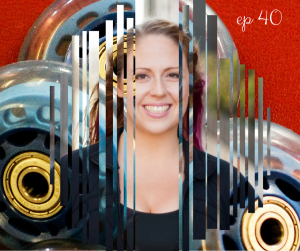Ep 40: Nikki Naab-Levy – A fresh conversation on “Body Diversity”
Podcast: Play in new window | Download
Subscribe: Apple Podcasts | RSS
Nikki describes herself as a kind of interpreter of ideas in the movement community; someone who looks at all that’s out there and helps others make sense of it, how it fits, and how it supports us as movers and professionals who teach movement.
When I was exploring Nikki’s website and podcast there was one line that jumped out at me that will give you a pretty good sense of this chic. She writes: “You know when your mind says yes but your body says hell no? It’s frustrating! I’ve been there too, I totally get it and I’m here to tell you that it doesn’t have to be this hard!”
I think you’re really going to enjoy this conversation between me, James and Nikki, especially because the subject of body and movement diversity is something James is a huge proponent and promoter of in his studio and his work. So, let’s meet Nikki…
Heroes
Both our Heroes and Pro Tip come directly from Nikki this episode.
Many of the shifts I’ve made in cuing at letting people feel things, has come from studying under Judith Aston for the past year and a half. She often speaks to “teaching from the yes” and it’s shifted my mindset from right and wrong ways to do things to movement options.
On the empowering people to feel good in their bodies end, I’d def give a shoutout to Molly Galbraith and Girls Gone Strong. They’re more on the heavy lifting side of things, but that org is all about having conversations about how we can bring more people to fitness and how we can empower women to feel they have the right to love and take care of themselves.
Pro Tip
From Nikki…
When you’re struggling with the idea of putting yourself out there or using a new teaching technique, the best way to get started is simply to start – preferably with a small action slightly outside of your comfort zone.
This doesn’t need to be a huge bold action. It doesn’t need to be perfect and there doesn’t need to be a beautifully drawn road map (which doesn’t exist and won’t be followed anyways). Small, consistent steps in the direction of where we want to go + patience is enough for us to grow into the people we want to be and create the shifts we desire.
Resources
- Moving Well Podcast with Nikki Naab-Levy and Janet Sunderland
- Nikki Naab-Levy’s website: http://naablevy.com/
- Some of our favorite Instagram posts from Nikki’s March Matness:
Connect With Us
- Email us at thinkingpilatespodcast@gmail.com or use the form below.
- Find us on Facebook at The Thinking Pilates Podcast
Reach us Individually
- Chantill – chantill@skillfulteaching.com
- Phone – (707) 738-7951
- Debora – dkolwey@gmail.com
- James – evolvedbody@yahoo.com


 How are you showing up? Why are you showing up? Why do you teach? What IS teaching? Why do you care? This is Skillful Teaching: A Whole-person approach to being an expert teacher, not an expert technician. There's a difference. Want to know what it is?
How are you showing up? Why are you showing up? Why do you teach? What IS teaching? Why do you care? This is Skillful Teaching: A Whole-person approach to being an expert teacher, not an expert technician. There's a difference. Want to know what it is?